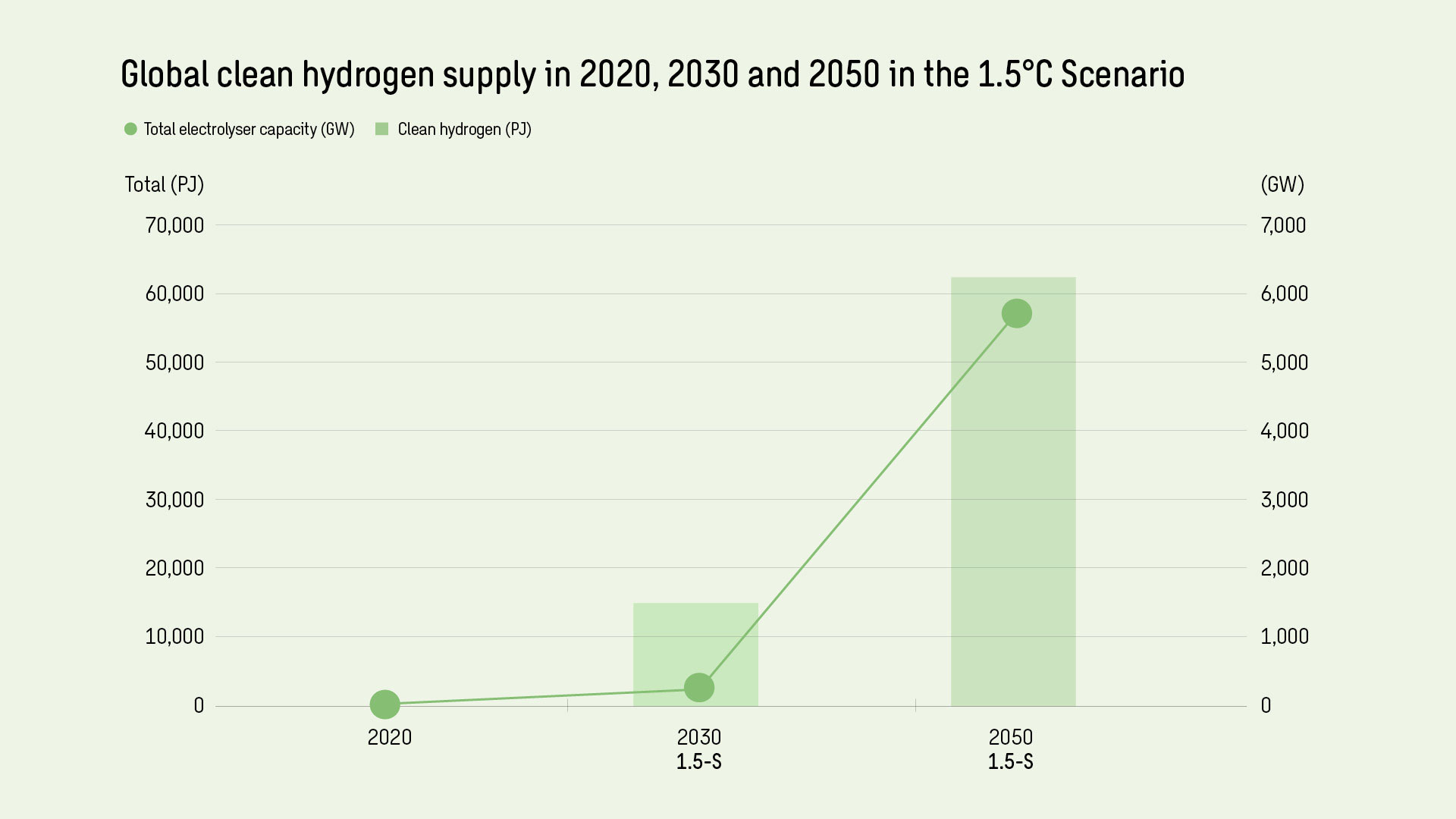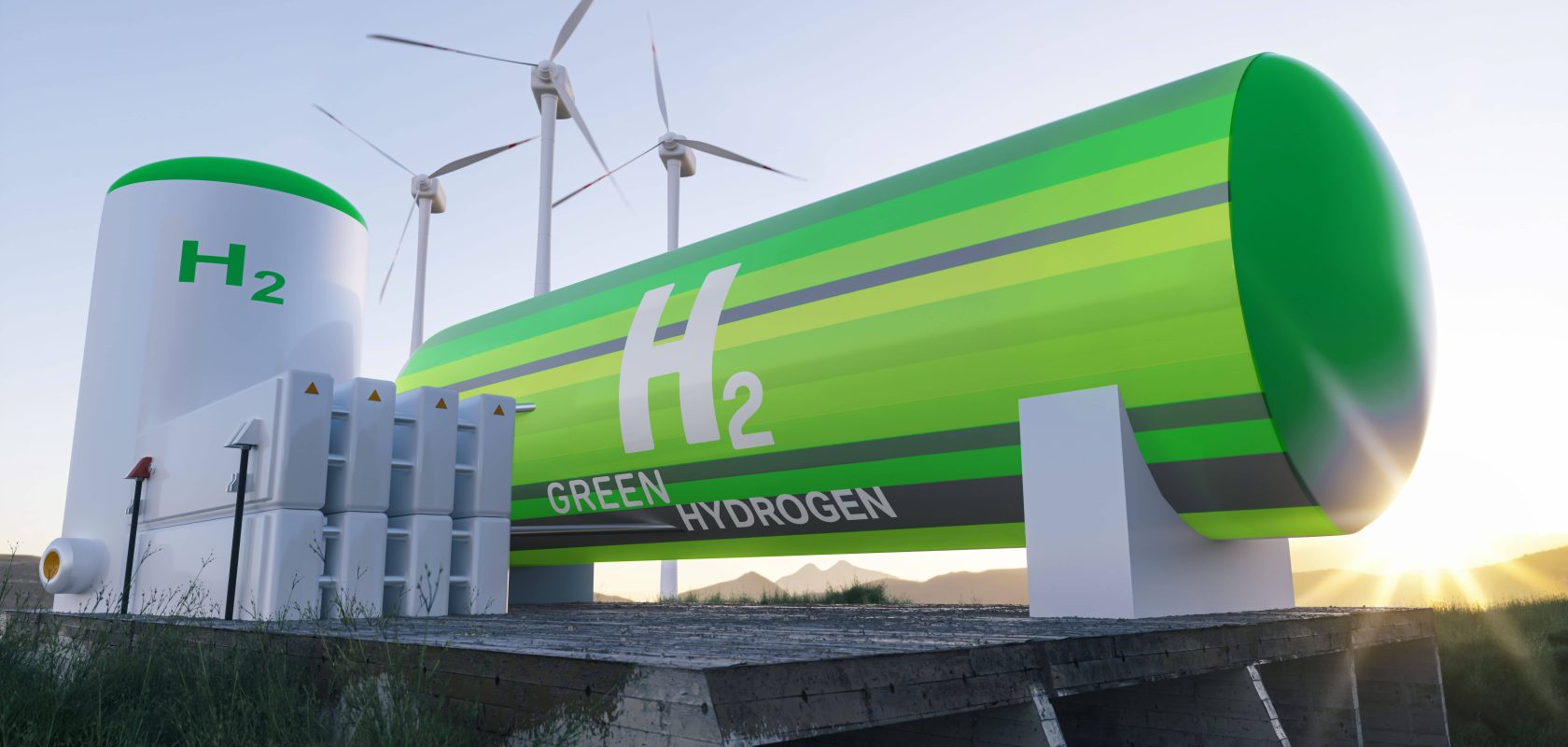How green hydrogen projects are powering sustainable transformation in industry
Green hydrogen, produced from renewable energy sources through electrolysis, has emerged as a key element that many sectors hope will be a game-changer in the race towards net zero. It offers unique business opportunities due to its efficient energy storage capabilities and low impact on the environment. Improved methods and increased access to clean energy have made green hydrogen an even more lucrative option for innovation and growth.
As the UK makes progress towards net zero, it is widely anticipated that hydrogen will play a central role in the switching of the transportation and industrial sectors away from fossil fuels. At Sweco UK – in partnership with vastly experienced teams from across our Group, we have the global expertise and local knowledge required to provide innovative hydrogen engineering consultancy that will drive meaningful energy evolution.
At Sweco our energy transition experts work together to design and execute a variety of green hydrogen projects alongside our clients, unlocking unique business opportunities due to hydrogen’s efficient energy storage capabilities and low impact on the environment. Our team of teams – collaborating across different regions including the Nordics – boasts experts in legislation and politics, who constantly monitor changes and developments within our industry to ensure our clients receive the best possible consultation within this constantly developing field.
Green hydrogen is already playing a pivotal role in international treaties, such as the Paris Agreement (2015) and the European Green Deal (2019). In February 2023, the Finnish Government approved a plan in which Finland aims to produce at least 10% of all green hydrogen within the EU by 2030.
These treaties and policies highlight the importance of green hydrogen within low-carbon and renewable energy sources, the realisation of transitioning into a green economy and the endeavors to curb climate change and achieving carbon neutrality.
Hydrogen’s green promise for Europe
Currently, 95 per cent of hydrogen produced around the world is “grey hydrogen,” made from fossil materials such as natural gas and coal. For hydrogen to truly become a catalyst in the green transition, the first challenge is to scale up production of clean hydrogen from renewable energy sources.
The green hydrogen race is on, with countries throughout Europe and the rest of the world increasing their investments.
The Finnish government’s plan aspires to generate at least 10 per cent of the European Union’s green hydrogen by 2030, doubling its current hydrogen usage within the next decade. Finland’s robust low-carbon electricity production and potential for wind power expansion position it as a key player in both domestic and international hydrogen markets.
Similarly, the Netherlands and Belgium are retrofitting their extensive gas pipeline networks to accommodate a new era of carbon-neutral hydrogen, aiming to fulfil a significant portion of the EU’s hydrogen import objectives.
Meanwhile, Germany’s industrial sector, particularly its steel industry, is committing to a considerable increase in green hydrogen capacity, with a dual strategy of domestic production and international imports.
And in the UK, the Government target is to reach 5GW of low-carbon hydrogen productive capacity by 2030.
However, the journey to a hydrogen economy is not without its challenges. The production, storage and transportation of green hydrogen can involve substantial energy losses, with efficiency rates sometimes dipping below 30 per cent. Despite these hurdles, the strategic investments in renewable energy infrastructure and international collaborations hint at a future where green hydrogen could be the linchpin of the industrial sector’s sustainable transformation.

Source: International Renewable Energy Agency (2023) – “World Energy Transitions Outlook 2023VOLUME 1” Published online at irena.org.
Sweco’s hydrogen portfolio
Sweco’s experts have wide-ranging experience from green hydrogen projects, ranging from early-stage planning to designing production plants, storage and transport solutions. Sweco’s in-depth expertise in Power-to-X technologies, electrolysis and carbon capture enable experts to create innovative green hydrogen solutions. Below are just some of the recent hydrogen-related projects Sweco has supported.
Feasibility & Environmental consultancy for a hydrogen Connectrolyser in the UK
The UK Government has set a target of reaching 5GW of low-carbon hydrogen productive capacity by 2030. In recognition of a number of constraints seemingly hindering the rollout and uptake of this technology in the UK, Sweco was commissioned to assist in the development of a feasibility study for Hydrogenus, specifically focusing on the installation of a 10MW hydrogen production facility.
Sweco provided evidence and delivered key insights into the practicalities of local hydrogen “hubs,” specifically targeting a UK knowledge gap whilst directly addressing the client’s challenges in the transition to a low-carbon economy. Engineers from within Sweco Belgium’s Hydrogen team, supported by environmental and transportation experts in the UK, took the lead on the technical design of the Connectrolyser itself.
This report aimed to identify and set out what the key constraints and opportunities are in the prevailing policy context, achieved through the formulation of functional design and implementation plans, calculation of balance of plant requirements to meet transportation / heavy industry needs, and an overview of the economic costs and benefits associated with a plant of this productive capacity.
In a wider sense, the report and assessment forms part of the Connectrolyser feasibility study for the alpha stage of the Strategic Innovation Fund Project. The study and analysis undertaken is to determine the benefit the Connectrolyser could provide by designing a hydrogen generation facility that also acts as a flexible energy demand/generation resource to reduce power network curtailment in the UK electricity distribution network. The implementation of Hydrogen as a fuel is at a critical stage in the UK, with a need to increase the scale of its production and affordability in the pursuit of achieving net zero.
Unlocking the first large-scale green hydrogen plant in the Benelux
VoltH2 has commissioned Sweco to perform the permit design and subsidy trajectory for two green hydrogen plants in the North Sea Port area in Vlissingen and Terneuzen (the Netherlands). The two planned hydrogen plants will generate green hydrogen using electricity from wind energy at sea. Thanks to these 25 MW hydrogen electrolysis plants millions of kilos of hydrogen will be produced from wind energy within a few years.
With positive impact on the entire value chain of hydrogen, VoltH2’s 25 MW green hydrogen plant in Vlissingen can produce up to 3,500 tonnes of green hydrogen per year, scalable up to 100 MW (14,000 tonnes). For context, one kilo of hydrogen is enough to drive a car 100 kilometres. The production plant can be connected to the European Hydrogen Backbone – the dedicated hydrogen infrastructure traversing Europe. VoltH2 is also actively developing additional sites in Belgium, France and Germany.
P2X progress in Finland
Sweco is designing a P2X Solutions green hydrogen production plant in the Harjavalta Industrial Park. The facility, scheduled to be completed in 2024, will become the first industrial-scale green hydrogen production plant in Finland.
This 20-megawatt P2X facility will turn renewable energy into hydrogen fuel. The Harjavalta plant is estimated to reduce Finland’s CO2 emissions by 40,000 tonnes annually, the equivalent of removing around 20,000 gasoline-powered cars from the roads. Hydrogen and synthetic fuels refined from the plant, such as methane, play a key role in adapting energy-intensive road transport, aviation and sea shipping to stricter emission limits.
The plant is just one of several projects that are underway. Other similar projects have not yet reached construction phase. Facilities of this kind will be capable of reducing CO2 emissions by even greater quantities in the future, which illustrates the potential that P2X and green hydrogen have in the pursuit of carbon-neutrality.
Converting plastic waste to low-carbon hydrogen in Poland
Plastic waste represents a worldwide issue, with only 16 per cent being repurposed into new products, whereas 40 per cent ends up in landfills across the globe. A waste-to-hydrogen initiative in central Poland is under development to tackle this issue, aiming to produce low-carbon hydrogen that will support the ongoing energy transition.
Modular waste-to-hydrogen plants will convert 40 tonnes of non-recyclable plastic waste into approximately 2.7 tonnes of 99.9 per cent pure low-carbon hydrogen each day, with the yield varying based on the plastic waste’s composition.
The processing line has the capacity to produce 2.5 to 3 tonnes of hydrogen daily, with the output contingent upon the raw material used. This fully electrified process will operate on renewable energy. Over its lifespan, the project is expected to reduce carbon emissions by hundreds of thousands of tonnes of CO2 equivalent (tCO2e), replacing lignite-derived heat and bolstering hydrogen utilisation. Additionally, the tail gas generated will power gas engines to create electricity and heat. Looking ahead, this byproduct holds potential as a feedstock in the chemical and petrochemical sectors.
Approximately 20 Sweco experts have been involved in the project, providing project design, communication and technical advisory support.
Green hydrogen technology reducing industrial CO₂ emissions
Green hydrogen is the key to reducing industrial carbon dioxide emissions. Its production is based on the utilization of renewable energy sources, such as wind and solar power, during the water electrolysis process. Unlike fossil fuels, this method doesn’t cause carbon dioxide emissions.
Green hydrogen can also be used in many different industrial processes that require energy or chemicals. For example, it can replace coal for iron ore reduction in the steel industry, which is one of the largest sources of carbon dioxide emissions. We work together with you in all green hydrogen projects, contributing towards the green transition and a more sustainable future.
Hydrogen technology aims towards carbon neutral transportation
Green hydrogen combined with carbon capture and use of renewable energy sources is a great way to reduce not only industrial but also transportation-related emissions. The P2X and hydrogen production process is a form of carbon sequestration when green hydrogen is turned into methane (CH4) or methanol (CH3OH). Carbon reclaimed from industrial sources functions as a raw material for fuels or chemicals produced from hydrogen. In doing this, the carbon used in further processing gets taken away from the energy normally released into the atmosphere.
Hydrogen can be used to power fuel cell cars, otherwise known as “hydrogen cars,” that produce electricity from their fuel cells with water as their only emission. Carbon neutral traffic can be advanced with synthetic fuels by combining hydrogen production and carbon capture.
Hydrogen can function as an energy source in maritime traffic, either directly or when converted into methane, methanol, or ammonia. Methane and methanol can be used in vessels’ internal combustion engines or fuel cells, reducing the carbon emissions produced by maritime traffic. Green hydrogen utilized in air traffic also signals a new way of approaching the traditional use of jet fuels. Hydrogen can be directly used to power aircraft, or it can be converted into synthetic jet fuel.
